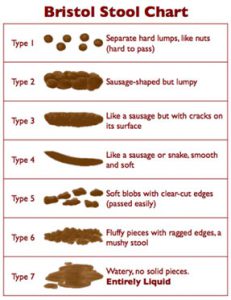An introduction to the Low FODMAP Diet

This diet can offer a brighter future for IBS patients than was the case 10 years ago. There is strong evidence to suggest the diet reduces symptoms of IBS in up to 75% of people with the condition. But what are FODMAP foods, and just what does a low FODMAP diet entail? This blog hopes to shed some light on the matter.
IBS – Irritable Bowel Syndrome
IBS really is irritable for anyone who suffers from it. It costs the NHS millions of pounds every year, with around 1 in 6 people suffering this condition.
IBS is typically diagnosed when for at least 6 months the patient has experienced recurrent abdominal pain, which is present at least 1 day a week in the last 3 months, and is associated with two or more of the following criteria:
- The pain is related to defecation, typically improving after a bowel movement
- Is associated with a change in frequency and or form (appearance) of the stool
Not all patients fit exactly into these criteria, however. Most importantly, as discussed in our previous blog on IBS and Probiotics, it is a condition that should always be diagnosed by a medical professional. Often this only requires a careful history and simple blood and stool tests.
IBS forms part of the functional gastrointestinal disorders or FGIDs, which are now called disorders of gut-brain interaction (DGBI). IBS classifications have recently changed (based on 2016 Rome IV criterion) to the following:
There could be a number of different contributors to IBS. Other medical conditions can trigger it, as can trauma or surgery. It can also be caused by something we ingest: diet, medication or infective causes (e.g. food poisoning). Another extremely important consideration are stress levels, which are also proven to cause or exacerbate symptoms.
The UK government organisation, NICE, offers “good practice” guidance on diet in relation to the onset of exacerbation of IBS. It encourages a regular eating pattern with regular exercise, with a diary of symptoms to be kept to try and establish a link between particular foods. Caffeine, alcohol, refined sugars, fatty foods and processed foods are all worth cutting down on. Probiotics can be introduced for a month or two whilst you monitor your symptoms.
If you have implemented the above advice but continue to have symptoms, you are likely to benefit from a referral to Registered Dietitian to learn more about the low FODMAP diet…
The term FODMAPs stand for Fermentable Oligo Disaccharides, Monosaccharides and Polyols. FODMAPs are a group of carbohydrates found within foods such as certain fruits, vegetables, pulses, milk and wheat. Incompletely digested or absorbed, they serve as a source of food for our gut. They also ferment in the gut, leading to a build-up of gas or fluid. An individual with a more sensitive gut that doesn’t tolerate FODMAPs may experience IBS symptoms such as bloating, abdominal pain, excess flatulence and/or diarrhoea.
Most people’s diets – healthy or not – are moderate to high FODMAP. So it’s no surprise that IBS symptoms are so prevalent among populations of the industrial world – particularly as there are many common foods purchased in supermarkets that have added them as ingredients, for example oligofructose of FOS. The low FODMAP diet involves a period of FODMAP restriction for 4-6 weeks, followed by a longer period of phased and gradual reintroduction of FODMAPs to reach an individual tolerance for these foods.
 Low FODMAPs is challenging to stick to, and advice from a dietitian is paramount so that the diet remains balanced for you as an individual. This is particularly important if you are a vegetarian or vegan. As well as restricting certain foods, it can be a practical challenge in planning and preparing meals often from scratch. There are, however, excellent resources for support such as books, online advice and recipes and/or FODMAP app.
Low FODMAPs is challenging to stick to, and advice from a dietitian is paramount so that the diet remains balanced for you as an individual. This is particularly important if you are a vegetarian or vegan. As well as restricting certain foods, it can be a practical challenge in planning and preparing meals often from scratch. There are, however, excellent resources for support such as books, online advice and recipes and/or FODMAP app.
A major feature of the low FODMAP diet is the fruit and veg traffic light system, with just a few examples of each listed below. The general rule is to avoid red, moderate amber and freely eat green.
Other restrictions
Processed foods such as sauces, dips, certain sweeteners, spreads and some processed meats (e.g. sausages) should be avoided. Dairy may need to be reduced; most people can, however, tolerate a small quantity (~12grams/day). Some alcoholic drinks (e.g. rum) need to be avoided, along with some herbal teas (e.g. camomile), and high fructose corn syrup drinks.
 Another key to low FODMAP diet is cutting out wheat, barley and rye. That means bread, pasta, cereals, cakes and, I’m afraid to say, lots of other baked flour-based desirables.
Another key to low FODMAP diet is cutting out wheat, barley and rye. That means bread, pasta, cereals, cakes and, I’m afraid to say, lots of other baked flour-based desirables.
You’ll need to be careful as small amounts of wheat especially is hidden in lots of processed foods – in fact there are all sorts of ways processed foods can be hiding FODMAPs. However, there are plenty of gluten-free alternatives available these days, as well as rice, rice noodles, oats, potatoes, quinoa, polenta etc. Besides, your gut really will appreciate the effort!
Have you considered or attempted the low FODMAP diet? Was there an improvement in your symptoms, or challenges with the diet? Let us know by commenting below!
This blog is written by a student dietitian, with scientific and medical detail reviewed by a Registered Dietitian and a Consultant Gastroenterologist.
0 Comment




Leave a Reply